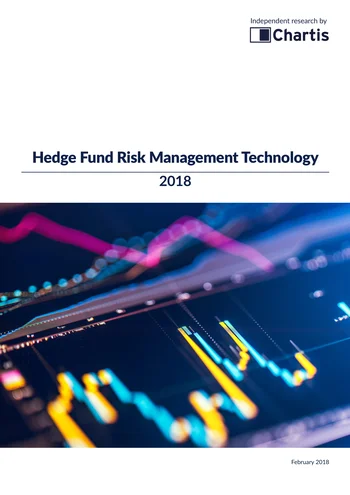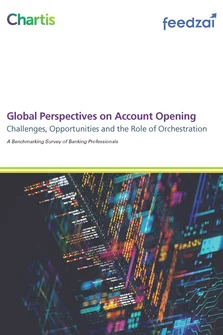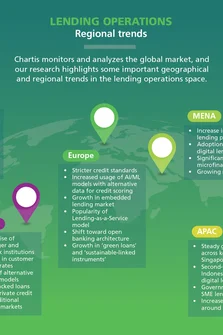<div class="WordSection1">
<p class="MsoBodyText">This report looks at the market for hedge fund risk management technology: the demand-side forces that shape it, and the strategies that vendors should employ to capitalize on the opportunities it offers. This analysis is based on Chartis’ deep knowledge of, and research into, the hedge fund marketplace.</p>
<p class="MsoBodyText">Chartis estimates the annual spend by hedge funds on risk, analytics and trading technology to be around $9bn, with larger funds accounting for the bulk of this expenditure. The main components of hedge funds’ risk management technology are modeling, portfolio management and analytics, and risk data aggregation and reporting.</p>
<p class="MsoBodyText">The long-tail nature of the market, and the huge variety of funds, make this a diverse landscape for risk management vendors to target. Changes affecting the way funds operate – from more demand for reporting to new distinct product lines – mean that their technology requirements are changing too.</p>
<p class="MsoBodyText">Deep macroeconomic shifts could also have profound effects on the hedge fund landscape, although it is still too early to tell what these might be.</p>
<p class="MsoBodyText">How hedge funds buy and use risk management technology is influenced by three variables: their size, their strategy and sectoral focus, and the background, experience and personal preferences of their managers. Larger funds, with bigger IT teams, tend to develop their risk management software in-house, while smaller ones – with fewer employees – tend to prefer bundled plug-and-play offerings outsourced from product and service providers.</p>
<p class="MsoBodyText">Thanks in part to this predilection for outsourcing, a thriving ecosystem of technology, software and service providers has grown up around hedge funds – notably prime brokers, managed account providers, fund administrators and securities service providers. Most funds will purchase their solutions from this pool, preferring out-of-the-box tools and subscription-based license models. Given the variety of players and offerings in the ecosystem, integration is an essential feature of solutions.</p>
<p class="MsoBodyText">Hedge funds – with their relatively deep pockets compared to institutions in other areas of financial services – make attractive clients for technology vendors. Reflecting the clients they supply, vendors in this space are diverse, to suit the wide range of strategies funds employ and the size and diversity of the supporting ecosystem. But selling to hedge funds – particularly large ones, with their preference for in-house solutions – can be difficult, for a number of cultural and operational reasons. The diversity of funds and fund strategies make accurate targeting especially taxing.</p>
<p class="MsoBodyText">We propose two parallel strategies that risk technology vendors can adopt:</p>
<ul>
<li>Direct targeting with specific strategies based on their established risk management expertise, data and modeling capabilities.</li>
<li>Targeting specific parts of the extended hedge fund ecosystem.</li>
</ul>
<p class="MsoBodyText">Most vendors will adopt both strategies; neither on its own will be enough. For newer vendors, the second option offers a considerable opportunity. Ecosystem organizations are likely to be more receptive to software than most hedge funds themselves, and offer a much wider group of potential clients that may be a better match for vendors’ business. Indeed, collaborations and partnerships are increasingly common as providers of all types work to create new openings and opportunities in this singular market.</p>
</div>
<p class="MsoBodyText">This report uses Chartis’s RiskTech Quadrant<sup>®</sup> to explain the structure of the market. The RiskTech Quadrant<sup>®</sup> uses a comprehensive methodology of in-depth independent research and a clear scoring system to explain which technology solutions meet an organization’s needs. The RiskTech Quadrant<sup>®</sup> does not simply describe one technology solution as the best risk management solution; it has a sophisticated ranking methodology to explain which solutions would be best for buyers, depending on their implementation strategies.</p>
<p class="MsoBodyText">This report covers the leading providers of risk management technology to hedge funds: Axioma, Ayasdi, Bloomberg, Broadridge, Enigma, FactSet, Finastra, FINCAD, FIS, Hanweck, ICE, Imagine Software, ITG, LSEG, MarketAxess, MoCaX Intelligence, MSCI, Numerix, Openlink, PolyPaths, PortfolioScience, Predata, Quandl, QuantCube Technology, RIMES, Riskdata, RiskSpan, SS&C Technologies, StatPro, Street Diligence, Suite LLC, THI, Thomson Reuters, Visible Alpha.</p>
Only users who have a paid subscription or are part of a corporate subscription are able to print or copy content.
To access these options, along with all other subscription benefits, please contact info@chartis-research.com or view our subscription options here: https://www.chartis-research.com/static/become-a-member
You are currently unable to print this content. Please contact info@chartis-research.com to find out more.
You are currently unable to copy this content. Please contact info@chartis-research.com to find out more.
Copyright Infopro Digital Limited. All rights reserved.
As outlined in our terms and conditions, https://www.infopro-digital.com/terms-and-conditions/subscriptions/ (point 2.4), printing is limited to a single copy.
If you would like to purchase additional rights please email info@chartis-research.com
Copyright Infopro Digital Limited. All rights reserved.
You may share this content using our article tools. As outlined in our terms and conditions, https://www.infopro-digital.com/terms-and-conditions/subscriptions/ (clause 2.4), an Authorised User may only make one copy of the materials for their own personal use. You must also comply with the restrictions in clause 2.5.
If you would like to purchase additional rights please email info@chartis-research.com



